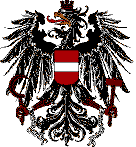| School | Troops | Resources |
Karl Menger's Vienna Colloquium

The "Vienna Colloquium" run by the mathematician Karl Menger (son of the economist Carl Menger) in the 1930s, brought together many different minds from mathematics but also the physical sciences, philosophy, statistics and economics. It was originally set up in 1928, but the main contributions to economics are the volumes 6,7 and 8 of the proceedings of the colloquium (1935, 1936 and 1937), which set modern general equilibrium theory in motion, advancing from its early roots in the Lausanne School.
Menger's mathematical colloquium met bi-weekly on the bottom floor of the mathematics department at the University of Vienna (on Boltzmanngasse), and its early presentations and discussions focused on pure mathematics, notably geometry and topology. Among the relevant participants in the Colloquium besides Karl Menger, was his students like Abraham Wald and Franz Alt, the banker and amateur economist Karl Schlesinger (then being tutored in mathematics by Menger and Wald) as well as the young economist Oskar Morgenstern. The polymath John von Neumann made some appearances in the early years. Other participants included assorted Viennese physicists and mathematicians like Kurt Gödel (who first announced his famous incompleteness theorem in the colloquium). The proceedings of the Vienna Colloquium were collected by Menger and published as the Ergebnisse eines mathematischen Kolloquiums during the 1930s.
One could argue that the Vienna Colloquium was the product of three distinct intellectual strands: the logical positivist philosophy of the Vienna Circle, the mathematics of Hilbert's "formalist" programme and the logical-deductivist economics of the Austrian School. In economics, the rallying point for the Vienna Colloquium was the investigation of metatheoretic general equilibrium systems with multiple, simultaneously interacting parts. For economists, the prototype of such a system was Gustav Cassel's (1918) resurrection of Leon Walras's theory, presentation of what has since become known as the Walras- Cassel model. The critiques set forth in the late 1920s and early 1930s by Frederik Zeuthen, Hans Neisser, Heinrich von Stackelberg on the Walras-Cassel system - particularly in relation to the possible existence of negative prices and indeterminacy arising from the equalities assumed by Leon Walras and Gustav Cassel.
Vienna Colloquium participants Karl Schlesinger and Abraham Wald reflected over this puzzle, and presented their papers in the same colloquium session (March 19, 1934, both published in the Ergebnisse of 1935): Schlesinger introduced the complementary "slackness" conditions and Abraham Wald provided a sketch of how to use them for a solution to the existence problem. A few months later, at another colloquium session (November 6, 1934), Abraham Wald finally provided the first "existence" proof of a unique equilibrium for the static Walras-Cassel system with inequalities exploiting these complementary slackness conditions and introducing the weak axiom of revealed preference (too late to be published in that year's proceedings, Wald's second paper was only published in 1936). The Spring of 1937, in the final volume of the proceedings, saw the publication of John von Neumann's (1937) model of an expanding multi-sectoral economy (originally presented in Princeton back in 1932). Von Neumann's paper was closer in spirit to the Classical Ricardian than the Walrasian general equilibrium world, but it provided a proof of existence via a generalization of Brouwer's fixed point theorem, the characterization of a solution as a saddle-point and the first to specify and exploit programming "duality" theorems and slackness conditions more fully. It is speculated that Wald might have used such a fixed point theorem for another improved proof of equilibrium, presented to a colloquium session sometime in December 1935 (although this paper was never published, and has since been lost).
Another outgrowth of the Vienna Colloquium was the axiomatization of utility theory, the introduction of uncertainty into the theory of choice and the development of the theory of games. This was pursued by two of its participants, John von Neumann and Oskar Morgenstern, in their pathbreaking treatise Theory of Games and Economic Behavior, which, although only published in 1944 while they were both in Princeton, clearly had its roots in the Vienna Colloquium (e.g. Bernoulli's expected utility hypothesis was introduced to John von Neumann through Karl Menger's 1934 article).
The Vienna Colloquium was disbanded in 1938 with the German Anschluss - indeed before that, as Karl Menger and some other participants had left in advance of it, as the political atmosphere deteriorated in Austria . The sessions came to an end by late 1936 and the last volume of the Ergebnisse came out in the Spring of 1937. Most of its members were scattered in exile in Britain and the United States. Although they remained in contact, it was not resurrected. Much of its research programme was subsequently taken up in the 1940s and 1950s by the Cowles Commission in Chicago.
|
The Vienna Colloquium Participants
|
HET
|
|
Resources Karl Menger's Vienna Colloquium
|
All rights reserved, Gonçalo L. Fonseca
